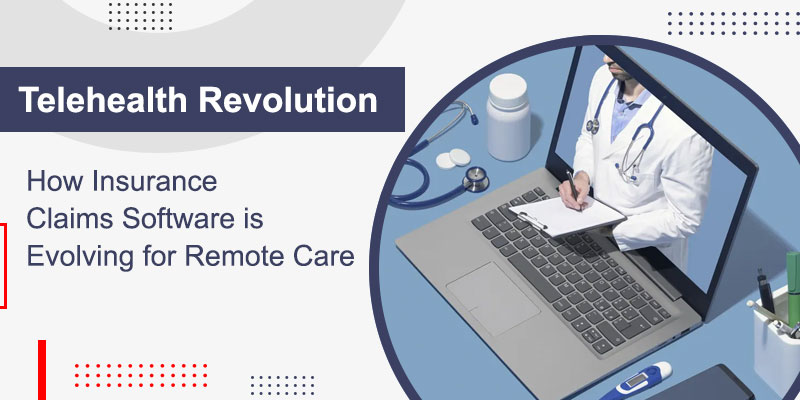How Claim Management Companies Can Enhance Their Practices
October 18, 2024
The advancement of telehealth has brought a great transformation to the landscape of healthcare. It is reducing the gap between patients and healthcare providers. As the world continues to embrace technological advancements, the healthcare industry has come up with multiple telehealth solutions. Telehealth, a growing part of healthcare delivery, has changed the way patients and providers work together by letting them get care and consults from a distance.
Insurance claims software is changing to support and handle online care, which is a key factor speeding up this change. In the past, insurance claims software was made to handle in-person meetings, which needed specific numbers and proof of services provided in a hospital setting. But because of the rise in telehealth services, these systems had to change how they work in a big way. The software had to be changed so that it could handle claims for telehealth services like virtual check-ups, online talks, and more. This made sure that both patients and doctors could easily get their money back. Here’s how insurance claims software has evolved to facilitate remote care:
Telehealth Integration
Modern insurance claims processing software now integrates telehealth features, enabling healthcare providers to submit claims for remote services. It supports the unique codes and documentation required for telehealth consultations, making the reimbursement process efficient and accurate. These advancements allow healthcare providers to efficiently submit claims for remote services. This integration encompasses the incorporation of specific codes, billing procedures, and documentation required for telehealth consultations, ensuring accurate and efficient reimbursement processes for both patients and healthcare providers.
Moreover, the evolution of insurance claims software ensures compliance with various regulatory standards, most notably the Health Insurance Portability and Accountability Act. These software modifications prioritize the privacy and security of patient data, adhering to stringent regulations governing telehealth services.
Regulatory Compliance
Telehealth services are subject to specific regulations and guidelines. Evolving insurance claims software ensures compliance with these regulations, including Health Insurance Portability and Accountability Act standards for patient data privacy and security.
These advancements allow healthcare providers to efficiently submit claims for remote services. This integration encompasses the incorporation of specific codes, billing procedures, and documentation required for telehealth consultations, ensuring accurate and efficient reimbursement processes for both patients and healthcare providers.
Expanded Coverage
Insurance claims software modifications have expanded coverage to include various telehealth services. Patients can now receive reimbursements for virtual visits, remote monitoring, mental health consultations, and more, fostering better access to healthcare from the comfort of their homes.
The expanded coverage within insurance claims software has been a pivotal development, encompassing a broader range of telehealth services. Patients now have access to reimbursements for a multitude of remote healthcare offerings, including virtual visits, mental health consultations, remote monitoring of chronic conditions, and more. This expanded coverage significantly enhances accessibility to healthcare services, especially for individuals in remote or underserved areas.
Streamlined Processes
The latest software streamlines administrative tasks by automating claim submissions, reducing paperwork, and expediting payment cycles. This efficiency benefits both healthcare providers and insurance companies, improving the overall patient experience.
Streamlining administrative processes has been another hallmark of the evolution of insurance claims software for remote care. The latest software iterations automate claim submissions, reducing paperwork, and expediting payment cycles. This increased efficiency benefits healthcare providers and insurance companies alike, ultimately enhancing the overall patient experience by minimizing administrative burdens and accelerating reimbursement timelines.
Conclusion
The ongoing evolution of insurance claims software represents a fundamental paradigm shift in the healthcare industry, embracing and accommodating the burgeoning prominence of telehealth services. As remote care continues to carve its place as a fundamental aspect of healthcare delivery, the evolution of insurance claims software remains instrumental in ensuring equitable access, efficiency, and quality care for patients irrespective of geographical constraints.
7 Features Every Online Claim Management System Needs
June 27, 2024What to Look for in Claims Management Software?
May 8, 2024









